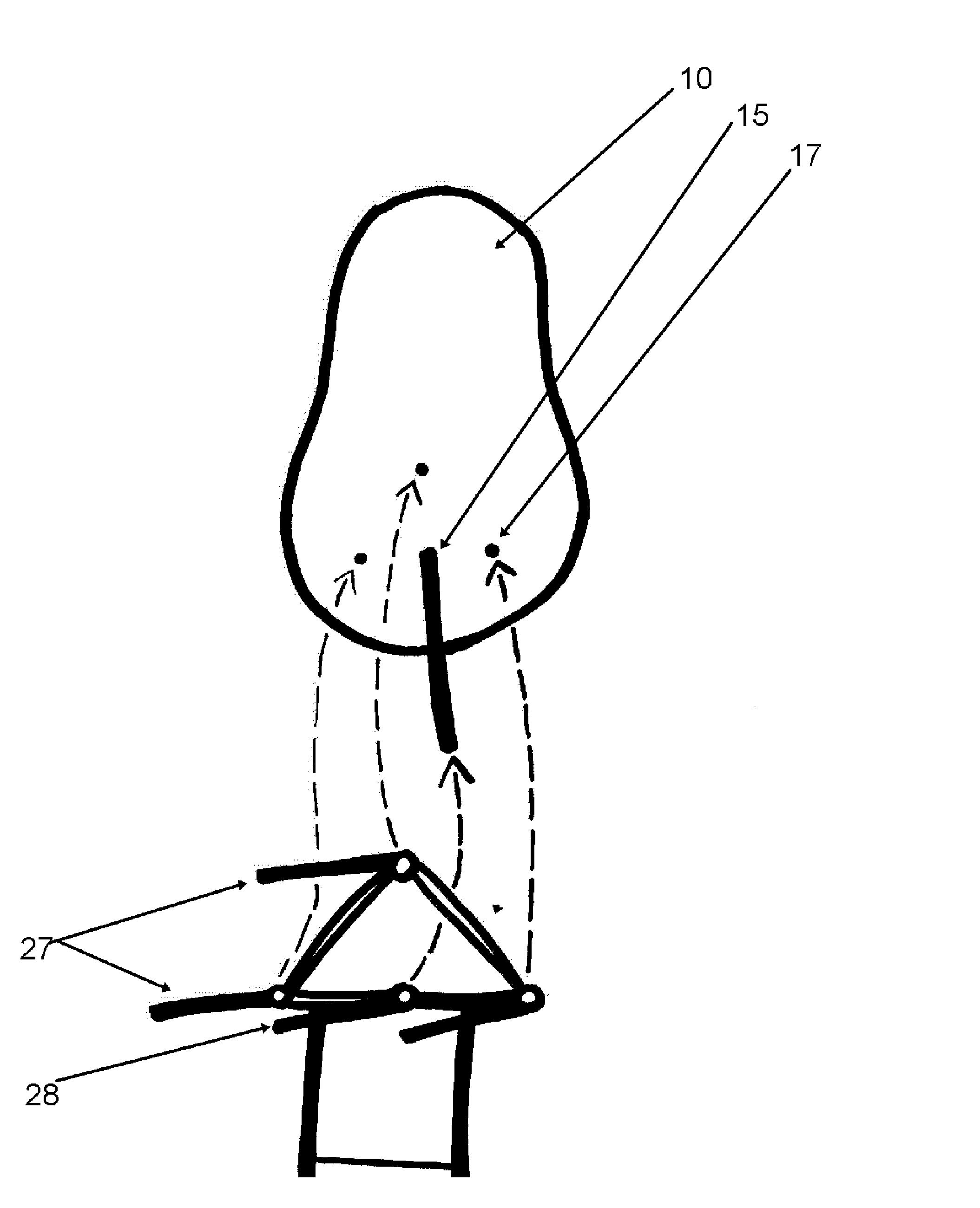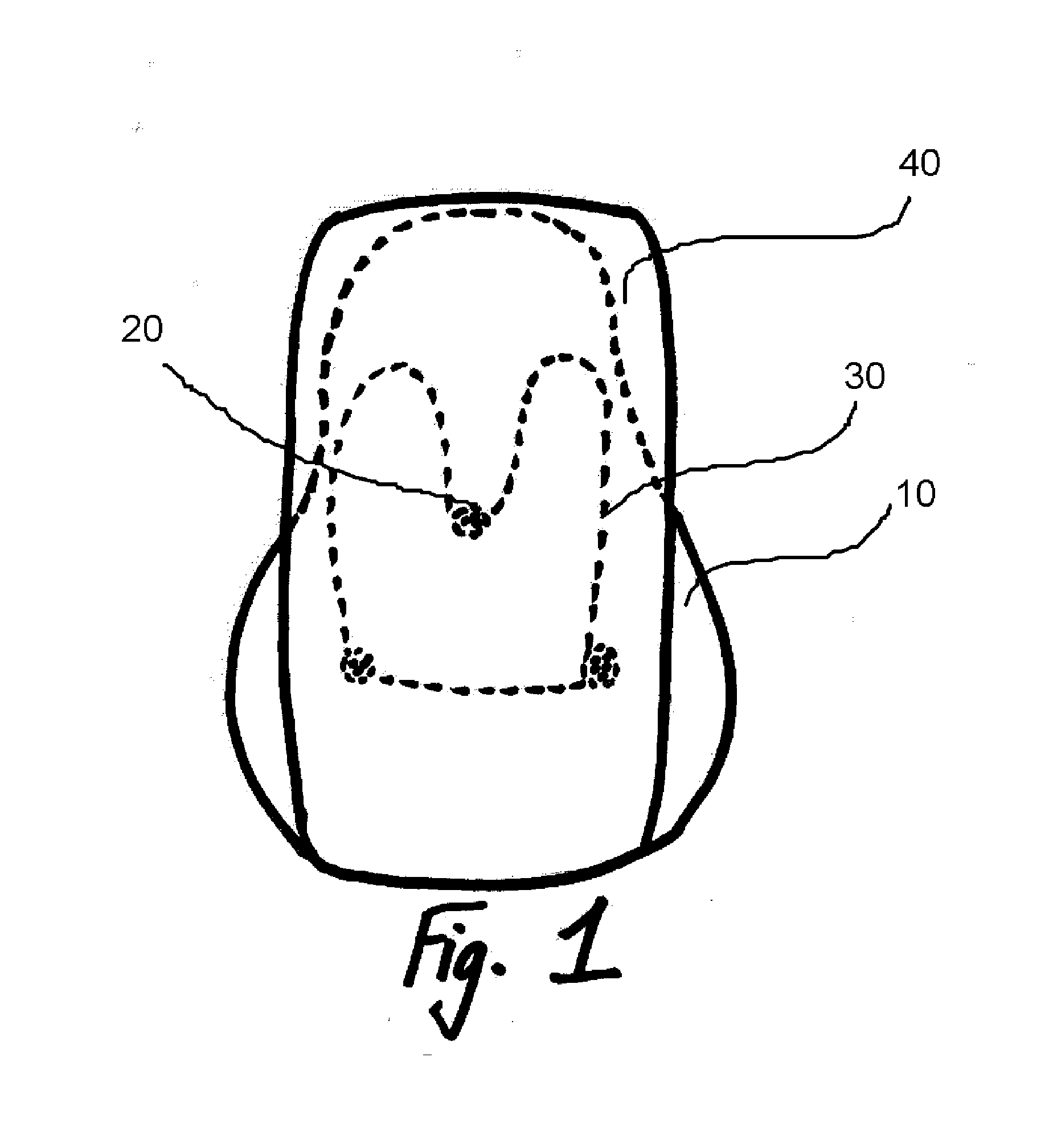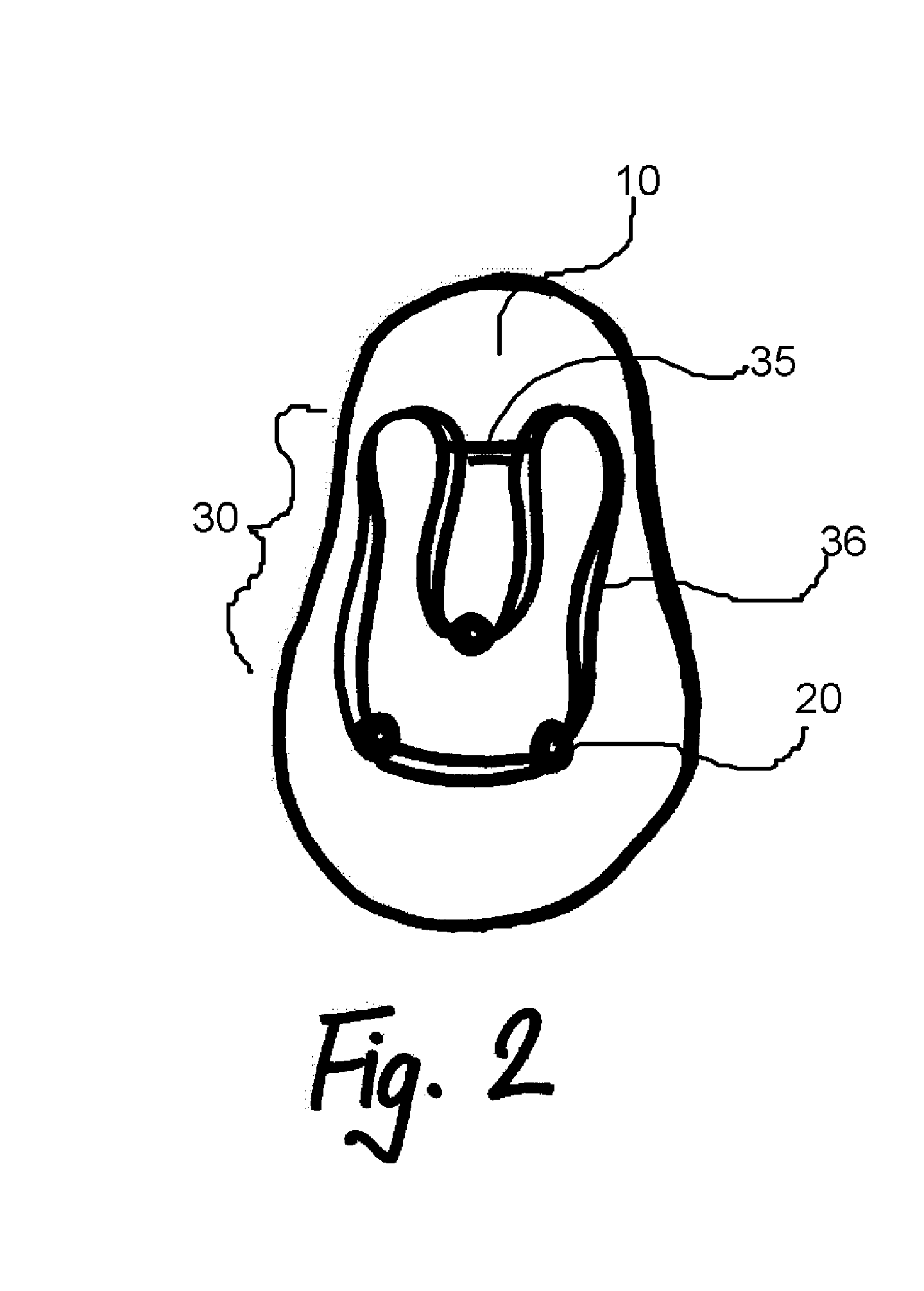Method for Attachment of Artificial Nail
a technology of artificial nails and nail splints, which is applied in the field of methods for splint attachment of artificial nails, can solve the problems of not being able to accurately go back and drill, and other freehand surgical techniques or methods cannot provide this level of precision and accuracy, so as to achieve greater precision, greater precision, and greater accuracy of longitudinal placement.
- Summary
- Abstract
- Description
- Claims
- Application Information
AI Technical Summary
Benefits of technology
Problems solved by technology
Method used
Image
Examples
Embodiment Construction
[0022] The overall method of the present invention attaches, by means of a threaded post 32, a “scaffold”30 into the bone of the toe 10 (distal phalanx) with bone anchors 20, and the artificial nail 40 is attached to the scaffold 30 by a positive clip-type action. Please refer to FIG. 1 and FIG. 2 to see the completed result of the method.
[0023] The first step of the method is to implement a guide wire 15 of 0.035″ in diameter, which is centrally placed through the distal phalanx 10. In FIG. 4, a pin-guide device 27 with four tubules 28 slightly larger than the guide wire 15, arranged in a diamond fashion with relatively long metal extensions 27, and the use of Velcro, allows the surgeon to make three tiny incisions 17 (to align the pins 18 and subsequently bone screws 20 correctly with the center of the distal phalanx 10 as shown in FIG. 5). The back tubule 28 of the pin-guide 27 fits over the guide wire 15 that was previously inserted into the bone 10.
[0024] The pin guide 27 hel...
PUM
 Login to View More
Login to View More Abstract
Description
Claims
Application Information
 Login to View More
Login to View More - R&D
- Intellectual Property
- Life Sciences
- Materials
- Tech Scout
- Unparalleled Data Quality
- Higher Quality Content
- 60% Fewer Hallucinations
Browse by: Latest US Patents, China's latest patents, Technical Efficacy Thesaurus, Application Domain, Technology Topic, Popular Technical Reports.
© 2025 PatSnap. All rights reserved.Legal|Privacy policy|Modern Slavery Act Transparency Statement|Sitemap|About US| Contact US: help@patsnap.com



